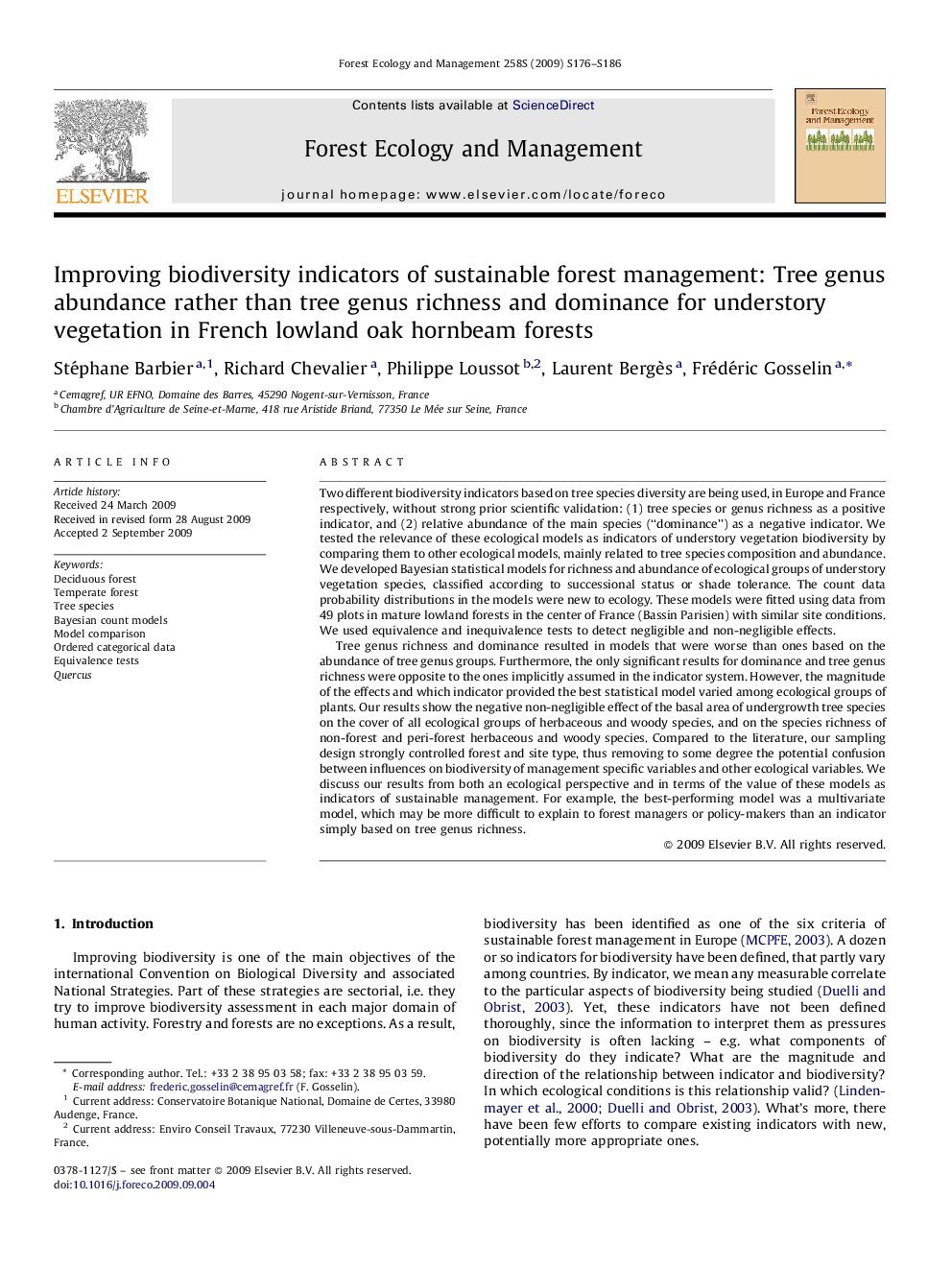| کد مقاله | کد نشریه | سال انتشار | مقاله انگلیسی | نسخه تمام متن |
|---|---|---|---|---|
| 88377 | 159300 | 2009 | 11 صفحه PDF | دانلود رایگان |

Two different biodiversity indicators based on tree species diversity are being used, in Europe and France respectively, without strong prior scientific validation: (1) tree species or genus richness as a positive indicator, and (2) relative abundance of the main species (“dominance”) as a negative indicator. We tested the relevance of these ecological models as indicators of understory vegetation biodiversity by comparing them to other ecological models, mainly related to tree species composition and abundance. We developed Bayesian statistical models for richness and abundance of ecological groups of understory vegetation species, classified according to successional status or shade tolerance. The count data probability distributions in the models were new to ecology. These models were fitted using data from 49 plots in mature lowland forests in the center of France (Bassin Parisien) with similar site conditions. We used equivalence and inequivalence tests to detect negligible and non-negligible effects.Tree genus richness and dominance resulted in models that were worse than ones based on the abundance of tree genus groups. Furthermore, the only significant results for dominance and tree genus richness were opposite to the ones implicitly assumed in the indicator system. However, the magnitude of the effects and which indicator provided the best statistical model varied among ecological groups of plants. Our results show the negative non-negligible effect of the basal area of undergrowth tree species on the cover of all ecological groups of herbaceous and woody species, and on the species richness of non-forest and peri-forest herbaceous and woody species. Compared to the literature, our sampling design strongly controlled forest and site type, thus removing to some degree the potential confusion between influences on biodiversity of management specific variables and other ecological variables. We discuss our results from both an ecological perspective and in terms of the value of these models as indicators of sustainable management. For example, the best-performing model was a multivariate model, which may be more difficult to explain to forest managers or policy-makers than an indicator simply based on tree genus richness.
Journal: Forest Ecology and Management - Volume 258, Supplement, 14 December 2009, Pages S176–S186